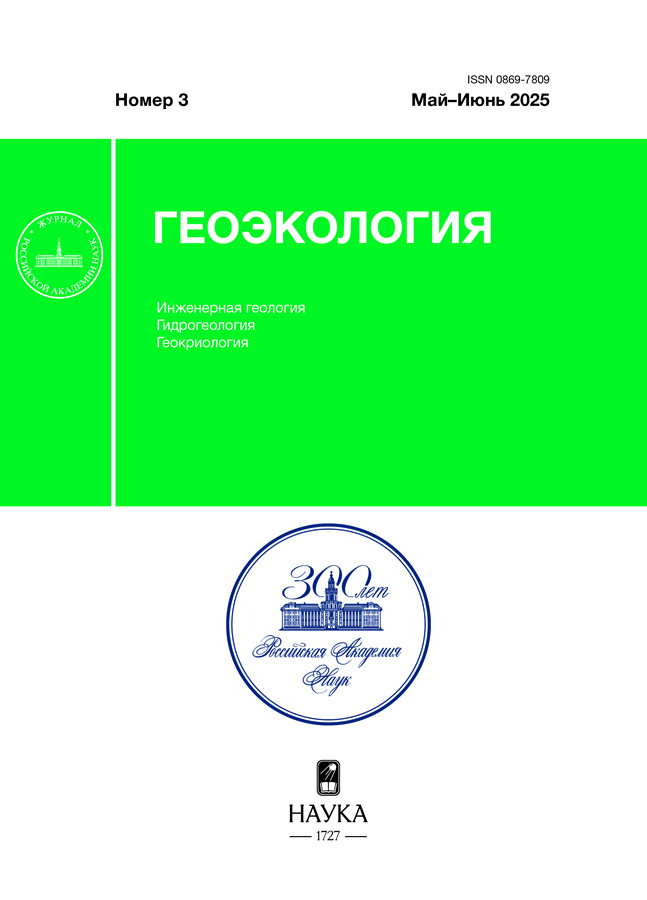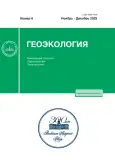Оценка точности и достоверности инженерно-геологических моделей на основе принципов машинного обучения
- Авторы: Жидков Р.Ю.1, Абакумова Н.В.2, Ракитина Н.Н.1, Лесников Г.А.1, Рекун В.С.1, Петров А.К.1
-
Учреждения:
- Московский городской трест геолого-геофизических и картографических работ
- Московский государственный университет имени М.В. Ломоносова
- Выпуск: № 6 (2023)
- Страницы: 4-15
- Раздел: МОДЕЛИ В ИНЖЕНЕРНОЙ ГЕОЛОГИИ И ГИДРОГЕОЛОГИИ
- URL: https://journals.rcsi.science/0869-7809/article/view/233666
- DOI: https://doi.org/10.31857/S0869780923060115
- EDN: https://elibrary.ru/CURLAY
- ID: 233666
Цитировать
Полный текст
Аннотация
Вопрос оценки достоверности инженерно-геологических моделей до сих пор недостаточно проработан в российской практике. Существенно большее внимание уделено методологии оценки достоверности и качества моделей в области геологии нефти и газа. Сопоставление этих методик с методологией оценки качества моделей машинного обучения показало сходство принципов и подходов, а следовательно, калибровка алгоритмов инженерно-геологического моделирования может выполняться с использованием инструментов оценки качества моделей машинного обучения. В статье описан опыт построения стратиграфо-генетической модели с использованием различных алгоритмических подходов с проведением количественной оценки достоверности моделирования на основе метрик машинного обучения. Показано, что задача построения трехмерной геологической модели может быть рассмотрена и как задача мультиклассовой классификации, и как задача регрессии, а предложенный подход сводит задачу разработки и калибровки алгоритмов к минимизации функции ошибок и позволяет отойти от субъективной оценки качества. Предложен показатель погрешности стратиграфо-генетической модели на основе расчета средних абсолютных ошибок и сопоставления с данными контрольной выборки. Отмечено, что предложенные подходы применимы при тестировании методологий инженерно-геологического моделирования в широком смысле, при этом наиболее сложна проверка прогнозных моделей любого вида. Сделан вывод о необходимости интенсификации разработки и наполнения баз инженерно-геологических данных, что позволит осуществить переход от субъективной экспертной оценки к применению современных подходов к моделированию сложно формализуемых сущностей и явлений.
Об авторах
Р. Ю. Жидков
Московский городской трест геолого-геофизических и картографических работ
Автор, ответственный за переписку.
Email: rzhidkov@mggt.ru
Россия, 123040, Москва,
Ленинградский пр. 11
Н. В. Абакумова
Московский государственный университет имени М.В. Ломоносова
Автор, ответственный за переписку.
Email: abakumova.nv@mail.ru
Россия, 119234, Москва,
Ленинские горы 1
Н. Н. Ракитина
Московский городской трест геолого-геофизических и картографических работ
Email: abakumova.nv@mail.ru
Россия, 123040, Москва,
Ленинградский пр. 11
Г. А. Лесников
Московский городской трест геолого-геофизических и картографических работ
Email: abakumova.nv@mail.ru
Россия, 123040, Москва,
Ленинградский пр. 11
В. С. Рекун
Московский городской трест геолого-геофизических и картографических работ
Email: abakumova.nv@mail.ru
Россия, 123040, Москва,
Ленинградский пр. 11
А. К. Петров
Московский городской трест геолого-геофизических и картографических работ
Email: abakumova.nv@mail.ru
Россия, 123040, Москва,
Ленинградский пр. 11
Список литературы
- Болдырев Г.Г. Трехмерное моделирование и визуализация данных инженерно-геологических изысканий. Состояние вопроса и практическая реализация // Инженерные изыскания. 2022. Т. XVI. № 1. С. 8–26.
- Геологический атлас Москвы (в 10 томах с пояснительной запиской). Масштаб 1:10 000 / Под ред. А.В. Антипова. М: Изд-во ГУП “Мосгоргеотрест”, 2012.
- Гулин В.В. Методы снижения размерности признакового описания документов в задаче классификации текстов // Вестник Московского энергетического института. 2013. № 2. С. 115–121.
- Жидков Р.Ю., Абакумова Н.В., Рекун В.С. Применение комплексного ретроспективного анализа при определении конфигурации массивов техногенных грунтов на примере г. Москвы // Инженерная геология. 2023. Т. ХVIII. № 1. С. 18–34.
- Закревский К.Е., Майсюк Д.М., Сыртланов В.Р. Оценка качества 3D моделей. М.: ООО “ИПЦ “Маска”, 2008. 272 с.
- Закревский К.Е., Попов В.Л. История развития трехмерного геологического моделирования как метода изучения залежей нефти и газа // Известия Томского политехнического университета. Инжиниринг георесурсов. 2021. № 5. С. 89–100.
- Королев В.А. О задачах цифровизации и искусственного интеллекта в инженерной геологии // Инженерная геология. 2021. Т. ХVI. № 1. С. 10–23.
- Левянт В.Б., Ампилов Ю.П., Глоговский В.М. и др. Методические рекомендации по использованию данных сейсморазведки (2D, 3D) для подсчета запасов нефти и газа. М.: Министерство природных ресурсов. ОАО “Центральная геофизическая экспедиция”, 2006. 39 с.
- Михайличенко А.А. Аналитический обзор методов оценки качества алгоритмов классификации в задачах машинного обучения // Вестник Адыгейского государственного университета. Сер. 4: Естественно-математические и технические науки. 2022. № 4 (311). С. 52–59.
- Технология трехмерного моделирования геологической среды и ее апробация на объектах жилищного фонда города Москвы по программе реновации // 75 лет инженерных изысканий в Москве / Под ред. А.Ю. Серова и др. Тверь: Талан Групп, 2019. С. 185–189.
- Трофимов В.Т., Королев В.А. О фундаментальных аспектах генетического подхода к изучению грунтов // Инженерная геология. 2019. Т. ХIV. № 1. С. 8–19.
- Шепета Д.А., Головин Е.Н., Иванова М.С. Метрики качества алгоритмов машинного обучения в задачах мультиклассификации // Научная сессия ГУАП: сб. докладов научной сессии, посв. Всемирному дню авиации и космонавтики. В 3-х частях, Санкт-Петербург, 08–12 апреля 2019 г. Часть II. СПб: ГУАП, 2019. С. 278–281.
- Box G.E.P. Robustness in the Strategy of Scientific Model Building / R.L. Launer, G.N. Wilkinson (ed.) // Robustness in Statistics – Academic Press. 1979. P. 201–236.
- Baynes F.J., Parry S. Guidelines for the development and application of engineering geological models on projects. International Association for Engineering Geology and the Environment (IAEG) Commission 25 Publication № 1. 2022. 129 pp.
- Geron A. Hands-On Machine Learning with Scikit-Learn and TensorFlow, Sebastopol: OREILLY. 2019. 548 pp.
- Tsai W.P., Feng D., Pan M., et al. From calibration to parameter learning: Harnessing the scaling effects of big data in geoscientific modeling // Nature Communications. 2021. V. 12 (1). P. 1–13.
Дополнительные файлы
















